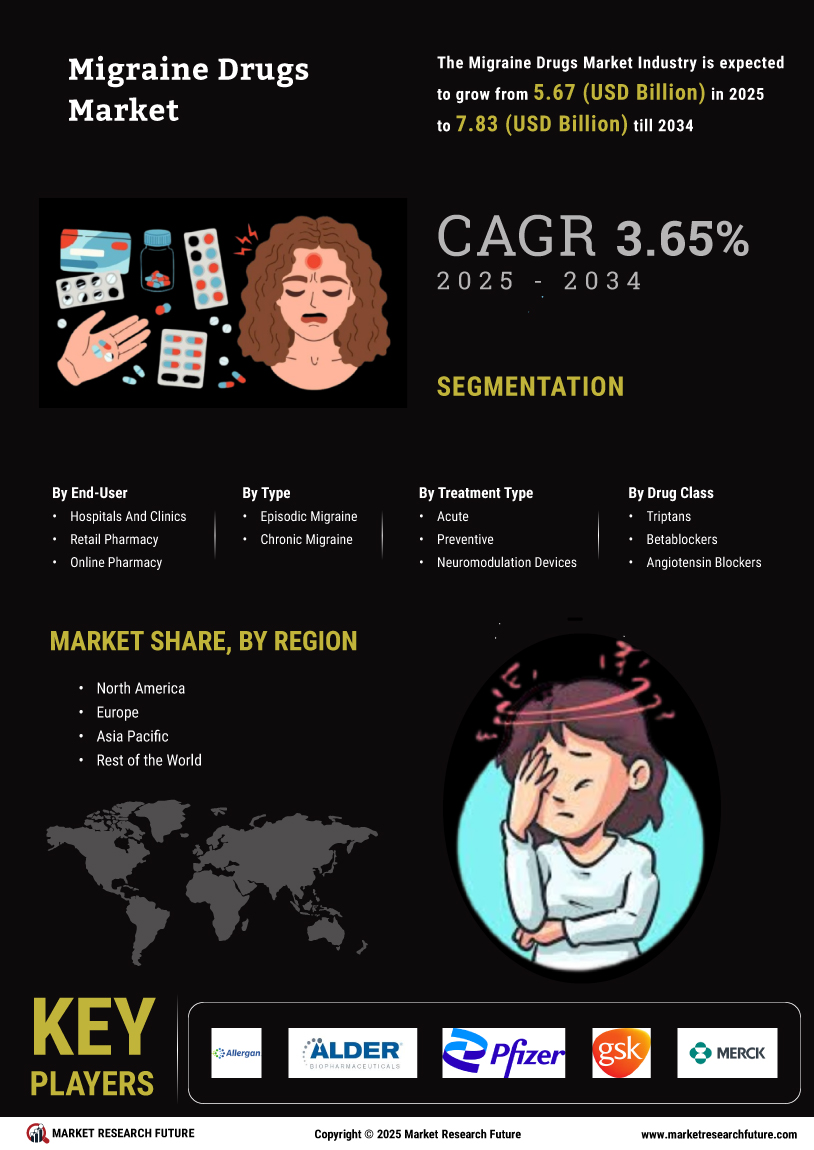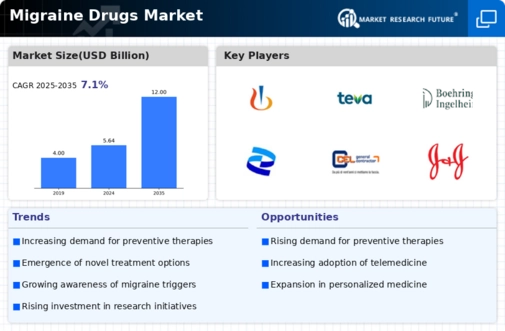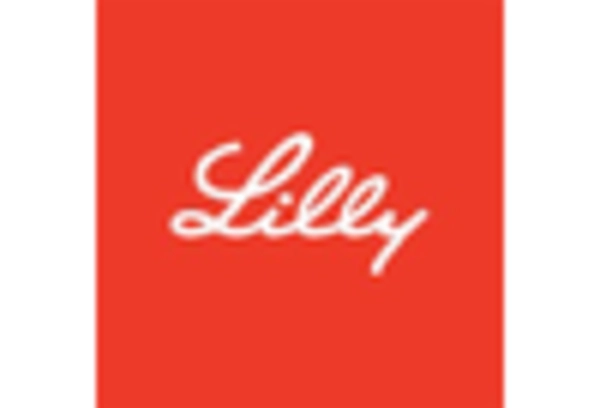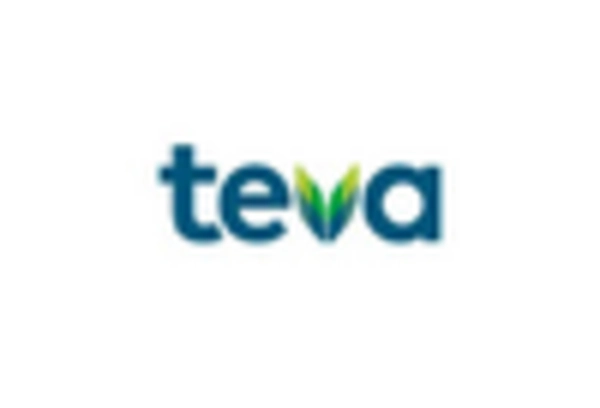The Migraine Drugs Market is characterized by a dynamic competitive landscape, driven by increasing prevalence rates of migraine disorders and a growing demand for effective treatment options. Key players such as Amgen (US), Eli Lilly (US), and AbbVie (US) are strategically positioned to leverage innovation and expand their product portfolios. Amgen (US) focuses on developing novel therapies, while Eli Lilly (US) emphasizes partnerships to enhance its market reach. AbbVie (US) is actively pursuing mergers and acquisitions to bolster its pipeline, collectively shaping a competitive environment that prioritizes advanced therapeutic solutions.
In terms of business tactics, companies are increasingly localizing manufacturing and optimizing supply chains to enhance efficiency and responsiveness to market demands. The competitive structure of the Migraine Drugs Market appears moderately fragmented, with several key players exerting influence. This fragmentation allows for diverse treatment options, yet the collective strength of major companies drives innovation and market growth.
In November 2025, Amgen (US) announced the launch of a new migraine treatment that utilizes a unique mechanism of action, potentially offering patients a novel option for relief. This strategic move underscores Amgen's commitment to innovation and positions the company to capture a larger market share amidst rising competition. The introduction of this treatment may also stimulate further research and development within the sector, encouraging other companies to enhance their offerings.
In October 2025, Eli Lilly (US) entered into a strategic partnership with a leading telehealth provider to facilitate remote consultations for migraine patients. This collaboration aims to improve patient access to care and streamline treatment pathways. By integrating digital health solutions, Eli Lilly (US) not only enhances its service delivery but also aligns with current trends towards telemedicine, potentially increasing patient adherence to treatment regimens.
In September 2025, AbbVie (US) completed the acquisition of a biotech firm specializing in migraine therapies, significantly expanding its research capabilities. This acquisition is likely to enhance AbbVie's pipeline and accelerate the development of innovative treatments. Such strategic actions reflect a broader trend of consolidation within the industry, as companies seek to bolster their competitive positions through enhanced research and development capabilities.
As of December 2025, current competitive trends in the Migraine Drugs Market include a pronounced focus on digitalization, sustainability, and the integration of artificial intelligence (AI) in drug development. Strategic alliances are increasingly shaping the landscape, enabling companies to pool resources and expertise. Looking ahead, competitive differentiation is expected to evolve, with a shift from price-based competition towards innovation, technological advancements, and supply chain reliability. This transition may redefine market dynamics, emphasizing the importance of delivering superior therapeutic solutions.

















